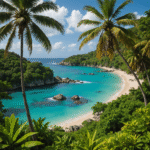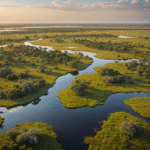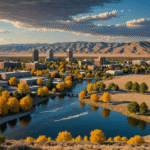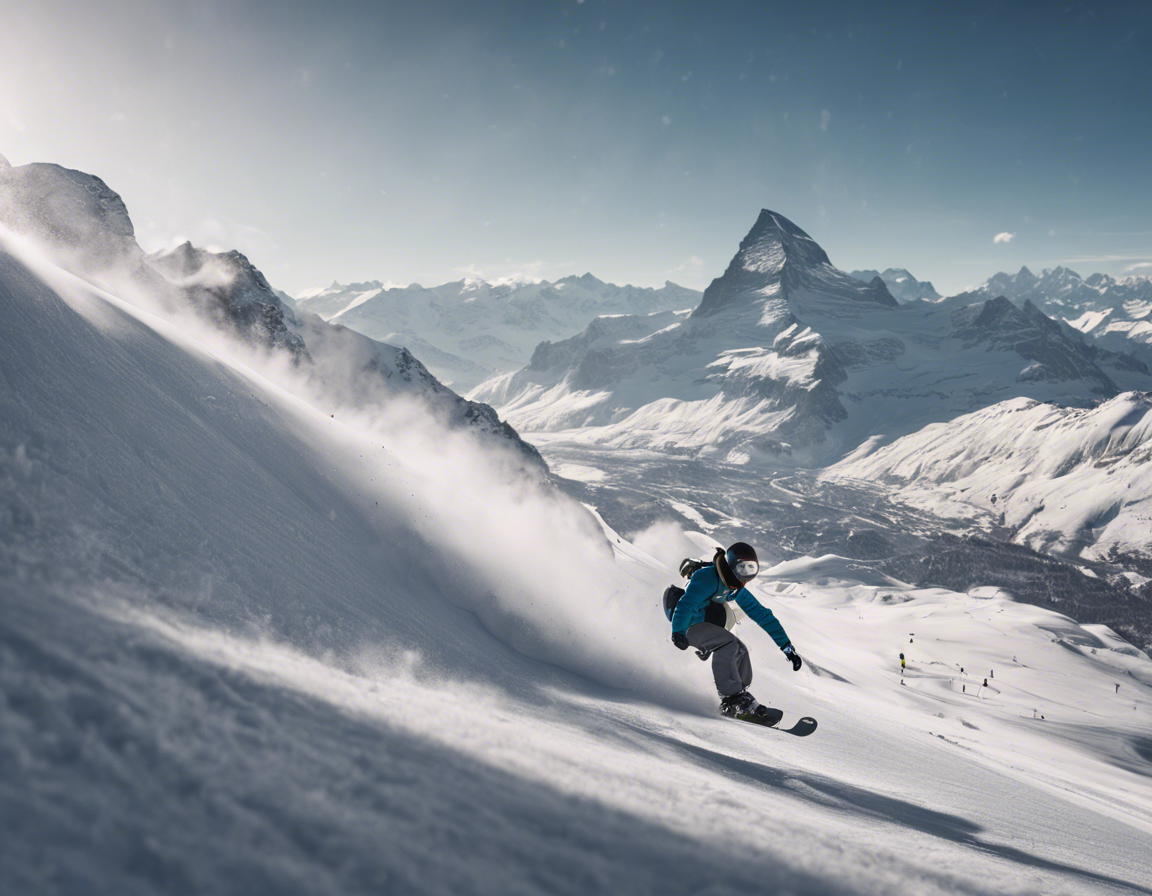
Snowboarding in the Swiss Alps:
is not just a winter sport; it’s an exhilarating adventure that combines breathtaking landscapes, thrilling slopes, and a vibrant après-ski scene. Whether you’re a couple seeking romance or a family looking for fun, the Swiss Alps offer something for everyone. This guide will explore the best activities, nightlife, dining options, and travel tips to make your snowboarding trip unforgettable.
A Brief History of Snowboarding in the Swiss Alps:
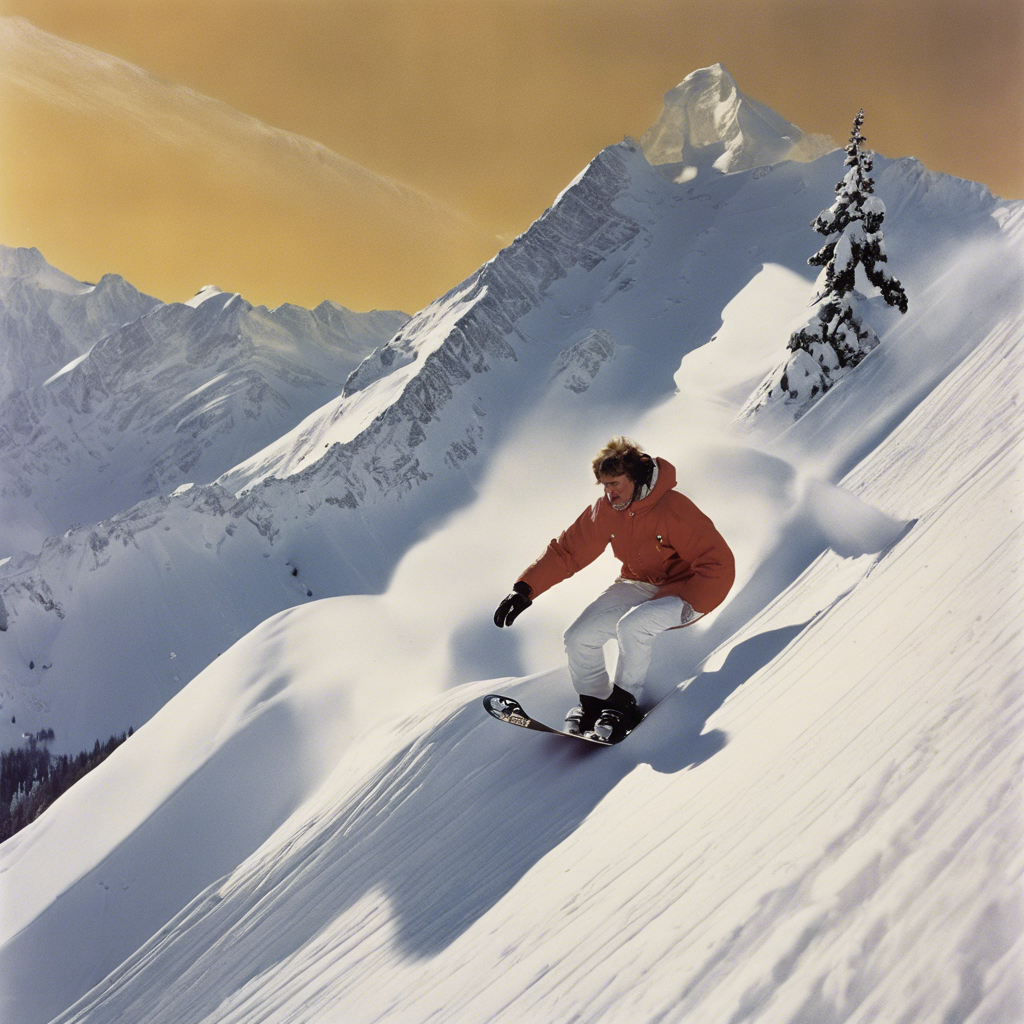
The history of snowboarding in the Swiss Alps is a fascinating tale that intertwines innovation, cultural shifts, and the evolution of winter sports. While snowboarding as we know it today is a relatively modern invention, its roots can be traced back to earlier forms of sliding down snowy slopes on wooden boards. Here’s a detailed exploration of its history and development in the Swiss Alps.
Early Beginnings
The origins of snowboarding can be linked to various cultures that used wooden boards for sliding down hills. In the 16th century, miners in Austria used a long wooden board called a “knappenroesser,” which had a rope or handlebar for steering. Similarly, in the Swiss Alps, a device known as “ritprätt” was used for similar purposes. These early forms of snowboarding were more about transportation than recreation, serving practical needs for those living in snowy regions.
The Birth of Modern Snowboarding
The modern era of snowboarding began in the 1960s in the United States. The pivotal moment came in 1965 when Sherman Poppen created the “Snurfer” by fastening two skis together and adding a rope for steering. This invention was intended as a toy for his daughter but quickly gained popularity. The term “snurfing,” a blend of “snow” and “surfing,” was coined by Poppen’s wife.
This innovation laid the groundwork for what would become snowboarding.
In the 1970s, Jacob Burton further advanced the sport by developing more sophisticated boards that included foot straps and fins for better control. His company, Burton Snowboards, became one of the leading brands in the industry and played a crucial role in popular snowboarding.
Snowboarding’s Arrival in Switzerland
Snowboarding made its way to Switzerland during the late 1970s and early 1980s. Initially met with skepticism, many Swiss ski resorts were hesitant to allow snowboarders on their slopes, fearing that they would be more dangerous than skiers. However, as the sport gained traction and began to attract younger audiences, resorts gradually opened their doors to snowboarders24.
The first significant competition in Switzerland took place in 1986 at St. Moritz, marking an important milestone for the sport’s acceptance in the country. This event helped establish snowboarding as a legitimate winter sport alongside skiing.
The Rise of Competitions
The competitive aspect of snowboarding began to flourish with events like the National Snow Surfing Championship held in Vermont in 1982, which included participants from various backgrounds and skill levels. This competition eventually evolved into what is now known as the Burton US Open, one of the most prestigious events in snowboarding.
By the late 1980s and early 1990s, snowboarding had cemented its place within winter sports culture. The International Snowboarding Federation (ISF) was established in 1990 to govern competitions and promote the sport globally. Snowboarding was officially recognized as an Olympic sport at the Nagano Winter Olympics in 1998, further solidifying its status.
Cultural Impact and Evolution
As snowboarding grew in popularity, it also influenced fashion and lifestyle trends among youth culture. The rebellious spirit associated with snowboarding attracted many young people who identified with its ethos of freedom and self-expression. This cultural shift contributed to a broader acceptance of snowboarding within ski resorts across Switzerland and beyond.
In recent years, snowboarding has continued to evolve with advancements in technology and equipment design. New styles such as freestyle and backcountry snowboarding have emerged, catering to diverse preferences among riders.
The history of snowboarding in the Swiss Alps reflects not only technological advancements but also significant cultural changes within winter sports. From its humble beginnings on wooden boards to becoming a mainstream Olympic sport, snowboarding has carved out its niche alongside skiing while fostering a unique community that celebrates adventure and creativity on the slopes. As it continues to evolve, snowboarding remains an integral part of Switzerland’s rich winter sports heritage.
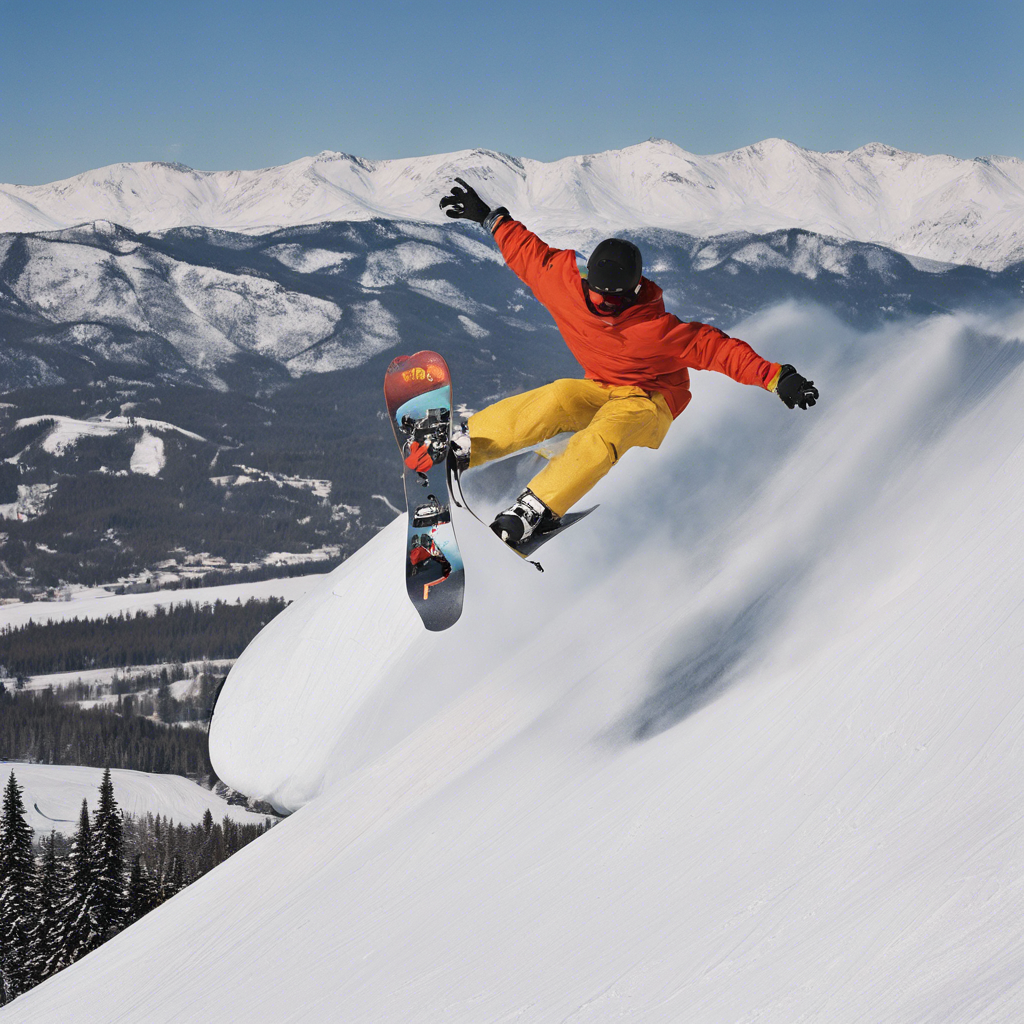
Top 10 Things for Couples to Do While Snowboarding in the Swiss Alps:
The Swiss Alps are not just a winter sports paradise; they are also a romantic haven for couples looking to blend adventure with intimacy. From thrilling snowboarding experiences to cozy evenings by the fire, here are the top 10 activities that couples can enjoy while snowboarding in this stunning region.
1. Hit the Slopes Together
Nothing says bonding like tackling the slopes side by side. Whether you’re seasoned snowboarders or beginners, sharing the thrill of gliding down powdery trails creates unforgettable memories. Consider taking a private lesson together to improve your skills and share some laughs as you tumble in the snow.
2. Sledging Adventures
For a playful twist, try sledging! Zooming down hills on a sledge is not only exhilarating but also a great way to unleash your inner child. Many resorts offer dedicated sledging areas, so grab your sled and race each other down the slopes for some friendly competition.
3. Horse-Drawn Sleigh Rides
Imagine snuggling under a cozy blanket as you glide through a winter wonderland. Horse-drawn sleigh rides offer a romantic escape, allowing you to take in the breathtaking scenery of the Swiss Alps at a leisurely pace. This charming experience is perfect for couples looking to enjoy some quiet time together.
4. Outdoor Ice Skating
After a day on the slopes, head to one of the outdoor ice rinks in resorts like Verbier or Zermatt. Skating hand-in-hand while surrounded by stunning alpine views is sure to create magical moments. Some rinks even host ice discos, adding an extra element of fun to your evening.
5. Candlelit Dinners with Mountain Views
End your day with a romantic dinner at one of the many gourmet restaurants nestled in the mountains. Enjoy exquisite Swiss cuisine paired with fine wine while soaking in panoramic views of snow-capped peaks. Restaurants like Le Rouge in Verbier are known for their ambiance and culinary delights.
6. Relaxing Spa Treatments
After an adventurous day, treat yourselves to rejuvenating spa treatments. Many resorts offer couples massages and wellness packages designed to help you unwind and relax together. Enjoying some pampering is an excellent way to recharge for another day on the slopes.
7. Stargazing in the Alps
Take advantage of the clear alpine skies at night by stargazing together. Find a quiet spot away from city lights, lay back, and marvel at the stars twinkling above you. This intimate experience can lead to deep conversations and shared dreams under the vast night sky.
8. Helicopter Tours Over the Alps
For couples seeking adventure and breathtaking views, consider booking a helicopter tour over the Swiss Alps. Soaring above majestic peaks and valleys provides an unforgettable perspective of this stunning landscape, making it a highlight of your trip.
9. Tandem Paragliding
If you’re feeling adventurous, try tandem paragliding! Experience the thrill of flying high above the mountains together, taking in spectacular views from above. This exhilarating activity is perfect for couples looking to share an adrenaline rush while enjoying nature’s beauty.
10. Après-Ski Fun
After an exciting day on the slopes, dive into the vibrant après-ski scene at local bars and clubs. Places like MooserWirt in St. Anton or Pacha in Ischgl are famous for their lively atmospheres where you can dance, enjoy live music, and toast to your adventures together.
Snowboarding in the Swiss Alps offers couples an incredible mix of adventure and romance. From thrilling activities on the slopes to cozy evenings spent enjoying each other’s company, there’s no shortage of ways to create lasting memories together in this beautiful winter wonderland. So pack your bags, grab your snowboard, and get ready for an unforgettable getaway!
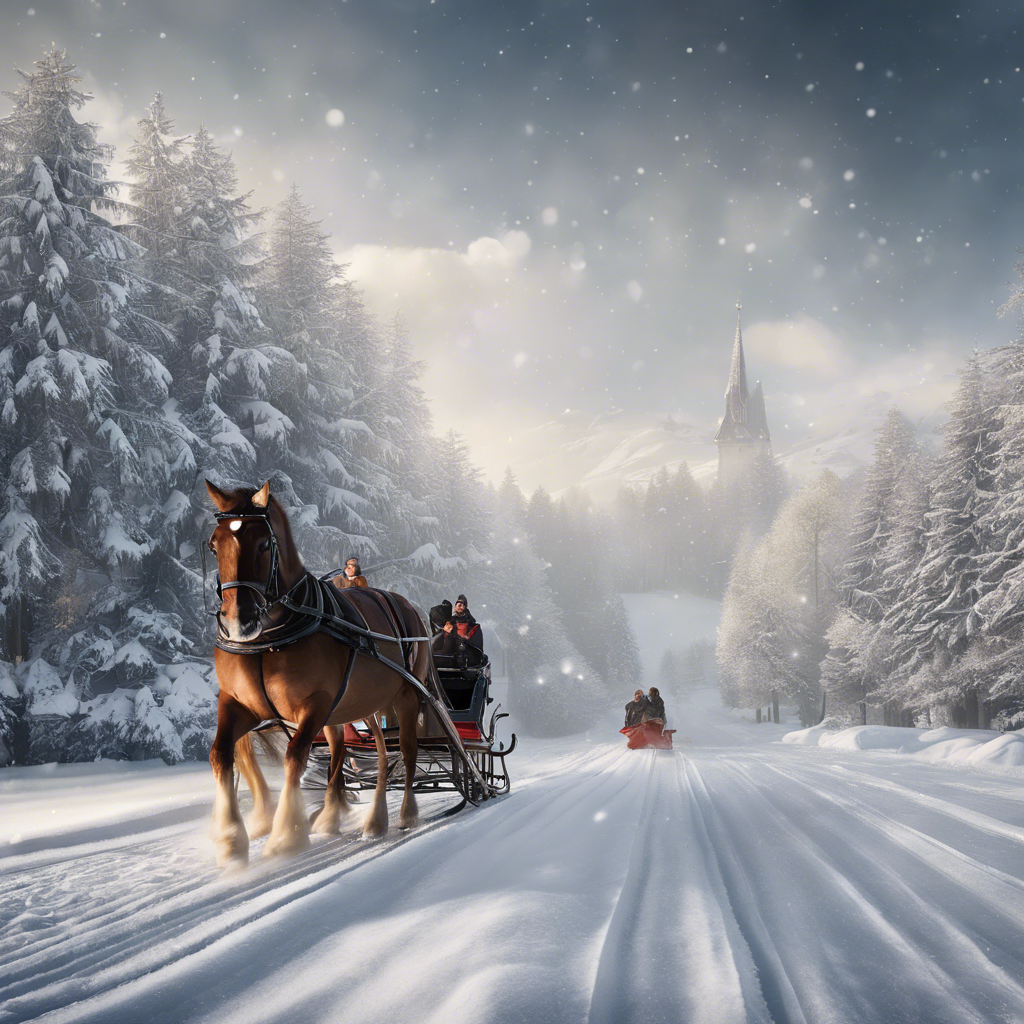
Trending Best Places to Visit:
The Swiss Alps are a dream destination for adventurers, couples, and families alike. With stunning landscapes, world-class skiing, and charming villages, there’s no shortage of places to explore. Here’s a roundup of the trending best places to visit in the Swiss Alps that should be on your itinerary.
1. Zermatt
Overview: Nestled at the foot of the iconic Matterhorn, Zermatt is a car-free village that offers breathtaking views and excellent skiing.
Activities: Enjoy skiing, snowboarding, and hiking. Don’t miss the Gornergrat railway for panoramic views.
Nightlife: Explore lively bars and clubs like Hennu Stall for après-ski fun.
2. St. Moritz
Overview: Known for its luxury and glamour, St. Moritz has hosted the Winter Olympics twice.
Activities: Skiing, snowboarding, and ice skating on the frozen lake. Experience the famous Cresta Run for a thrilling toboggan ride.
Dining: Indulge in gourmet dining at restaurants like Badrutt’s Palace Hotel.
3. Verbier
Overview: A favorite among snowboarders and skiers, Verbier boasts an extensive ski area and vibrant nightlife.
Activities: Hit the slopes or enjoy off-piste skiing. The après-ski scene is buzzing with bars like Le Rouge and Farm Club.
Accommodation: Stay at luxurious chalets or boutique hotels offering stunning mountain views.
4. Andermatt
Overview: A hidden gem that’s gaining popularity for its unspoiled nature and excellent skiing conditions.
Activities: Skiing and snowboarding on diverse terrain. Explore the charming village with its traditional Swiss architecture.
Accommodation: The Chedi Andermatt offers luxury with a spa and fine dining options12.
5. Grindelwald
Overview: Known as the “Glacier Village,” Grindelwald offers stunning views of the Eiger mountain.
Activities: Skiing, hiking, and taking the First Cliff Walk by Tissot for breathtaking views.
Family Fun: Ideal for families with activities like sledding and ice skating.
6. Laax
Overview: Renowned for its snow parks and freestyle opportunities, Laax is a must-visit for snowboarders.
Activities: Enjoy snowboarding on varied terrains or relax in the wellness centers after a day on the slopes.
Nightlife: The nightlife is vibrant with bars like Riders Palace offering live music.
7. Saas Fee
Overview: Known as the “Pearl of the Alps,” Saas Fee is car-free and offers year-round skiing.
Activities: Skiing on glaciers, snowshoeing, or enjoying the ice pavilion.
Dining: Experience local cuisine at cozy mountain huts.
8. Arosa
Overview: A family-friendly resort known for its sunny slopes and beautiful lake.
Activities: Skiing, snowboarding, and winter hiking trails make it ideal for all skill levels.
Accommodation: Consider staying at BelArosa Suites & Wellness for a cozy retreat.
9. Klein Matterhorn (Cervinia)
Overview: Famous for its high-altitude skiing, Klein Matterhorn connects Switzerland with Italy.
Activities: Ski across borders while enjoying stunning views of the Matterhorn.
Dining: Try Italian cuisine in Cervinia after a day on the slopes.
10. Interlaken
Overview: Nestled between Lake Thun and Lake Brienz, Interlaken is perfect for adventure seekers.
Activities: Engage in winter sports or take part in paragliding for an adrenaline rush.
Nightlife & Dining: Explore local bars or dine at traditional Swiss restaurants.
The Swiss Alps offer an array of breathtaking destinations that cater to every type of traveler. Whether you’re seeking adventure on the slopes or a romantic getaway in a cozy chalet, these trending places will make your trip unforgettable. So pack your bags, grab your snowboard, and get ready to explore this winter wonderland!
Top Restaurants and Cuisine:
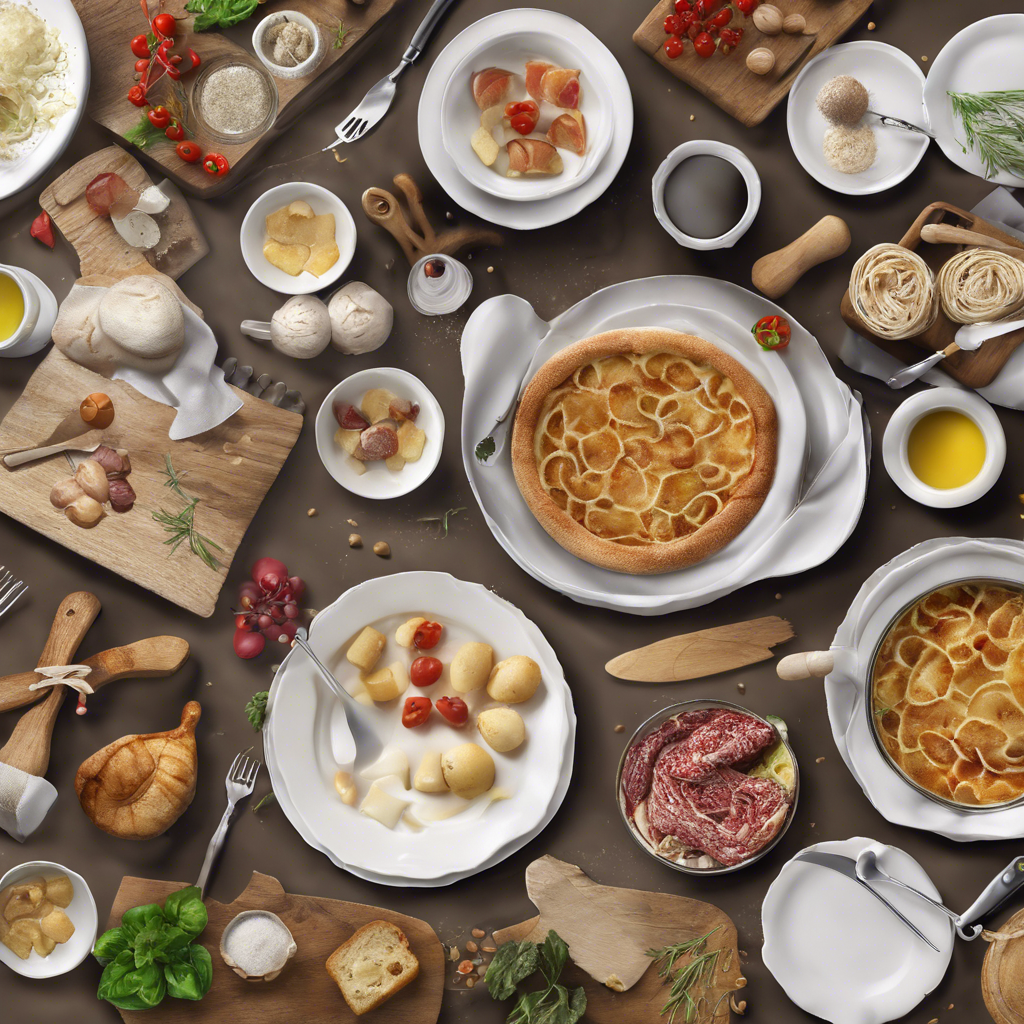
The Swiss Alps are not just a paradise for snow sports; they also boast a vibrant culinary scene that reflects the region’s rich traditions and innovative flair. From cozy mountain huts serving hearty local dishes to Michelin-starred restaurants offering gourmet experiences, here are some of the top restaurants you shouldn’t miss while snowboarding in the Swiss Alps.
1. Fondue Villa & Garden
Location: Seestrasse 44, Unterseen
Rating: 4.8 (681 reviews)
Cuisine: Specializes in traditional Swiss fondue.
Ambiance: Cozy and inviting, perfect for couples or families looking to enjoy a classic Swiss dining experience.
Highlights: The outdoor garden setting is especially charming during winter evenings, making it a great spot to unwind after a day on the slopes.
2. Gütsch by Markus Neff
Location: Andermatt
Rating: Michelin-starred restaurant.
Cuisine: Innovative dishes using local ingredients.
Ambiance: Located at high altitude with stunning views of the Central Alps, this restaurant offers a unique dining experience.
Highlights: Known for its exceptional service and creative menu, it’s a must-visit for foodies looking for an upscale dining experience in the mountains.
3. Mountain Restaurant Fürenalp
Location: Fürenalp 1, Engelberg
Rating: 4.7 (374 reviews)
Cuisine: Offers a variety of Swiss dishes with a focus on local ingredients.
Ambiance: A rustic mountain setting that provides a warm and welcoming atmosphere after a long day of skiing.
Highlights: The terrace offers breathtaking views of the surrounding peaks, making it an ideal spot for lunch or dinner.
4. Ochsen
Location: Gotthardstrasse 72, Andermatt
Rating: 4.7 (300 reviews)
Cuisine: Traditional Swiss fare with modern twists.
Ambiance: A lively atmosphere perfect for après-ski gatherings.
Highlights: Known for its hearty meals and extensive wine list, it’s an excellent place to relax and enjoy good food after hitting the slopes.
5. Schilthorn – Piz Gloria 360° Restaurant
Location: Mürren
Rating: 4.2 (831 reviews)
Cuisine: Offers a diverse menu with Swiss specialties.
Ambiance: Famous for its panoramic views, this rotating restaurant provides a unique dining experience as you enjoy your meal surrounded by stunning alpine scenery.
Highlights: A must-see location, especially for fans of the James Bond film “On Her Majesty’s Secret Service,” which was partially filmed here.
6. Alp-Hittä
Location: Nätschen, Andermatt
Rating: 4.7 (586 reviews)
Cuisine: Traditional Swiss mountain cuisine.
Ambiance: A charming mountain hut atmosphere that makes you feel right at home.
Highlights: Perfect for a quick bite between runs or a leisurely meal while enjoying the stunning mountain views.
7. La Marlénaz
Location: Rte de la Marlène, Bagnes
Rating: 4.6 (334 reviews)
Cuisine: Focuses on local ingredients with seasonal menus.
Ambiance: A cozy restaurant that emphasizes sustainability and local produce.
Highlights: Ideal for those looking to enjoy authentic Swiss flavors in a relaxed setting.
8. Bergrestaurant Wasserngrat
Location: Gstaad
Cuisine: Traditional Swiss dishes like rösti and fondue.
Ambiance: Set at an elevation of about 1,920 meters, it offers stunning views and fresh mountain air.
Highlights: Accessible via chairlift or hiking, making it an adventure to get there as well as a treat once you arrive.
9. Restaurant at The Chedi Andermatt
Location: Andermatt
Rating: Michelin-starred dining experience.
Cuisine: Combines Asian influences with Swiss culinary traditions.
Ambiance: Elegant setting within a luxury hotel; perfect for special occasions or romantic dinners.
10. Gadä
Location: Andermatt
Rating: 4.6 (111 reviews)
Cuisine: Offers hearty meals ideal for refueling after skiing or snowboarding.
Dining in the Swiss Alps is an experience that goes beyond just food; it’s about savoring the flavors of the region while surrounded by breathtaking scenery. Whether you’re indulging in fondue at Fondue Villa & Garden or enjoying gourmet cuisine at Gütsch by Markus Neff, these restaurants offer something special for every palate. So after an exhilarating day on the slopes, make sure to treat yourself to some of the best culinary delights the Alps have to offer!
Top 15 Things for Families to Do While Snowboarding in the Swiss Alps:
Ski Schools for Kids
Enroll your children in ski schools where they can learn from professional instructors in a fun environment.
Family-Friendly Slopes
Explore designated family slopes that cater to all skill levels, ensuring everyone has fun.
Snow Parks
Visit snow parks with features suitable for children where they can practice their skills safely.
Ice Climbing Experiences
Older kids can try ice climbing under professional supervision—an exhilarating experience!
Visit Animal Parks
Some resorts have animal parks where kids can see local wildlife up close.
Snow Tubing
Enjoy thrilling rides down snowy hills on inflatable tubes—a hit with younger children!
Indoor Water Parks
Take a break from skiing at nearby indoor water parks that offer slides and pools.
Winter Hiking Trails
Family-friendly hiking trails allow you to explore winter landscapes together.
Sledding Adventures
Rent sleds and race down designated sledding hills—fun for all ages!
Cultural Visits
Explore local museums or historical sites to enrich your trip with cultural knowledge.
Craft Workshops
Participate in workshops where families can learn traditional crafts or cooking techniques.
Family Spa Days
Some spas offer family packages that include kid-friendly treatments.
Themed Events
Check out local calendars for family-friendly events like winter festivals or markets.
Dog Sledding
Experience dog sledding as a family—an unforgettable adventure!
Photography Tours
Capture stunning family moments with guided photography tours around scenic spots.
Nightlife: The Best Nightclubs:
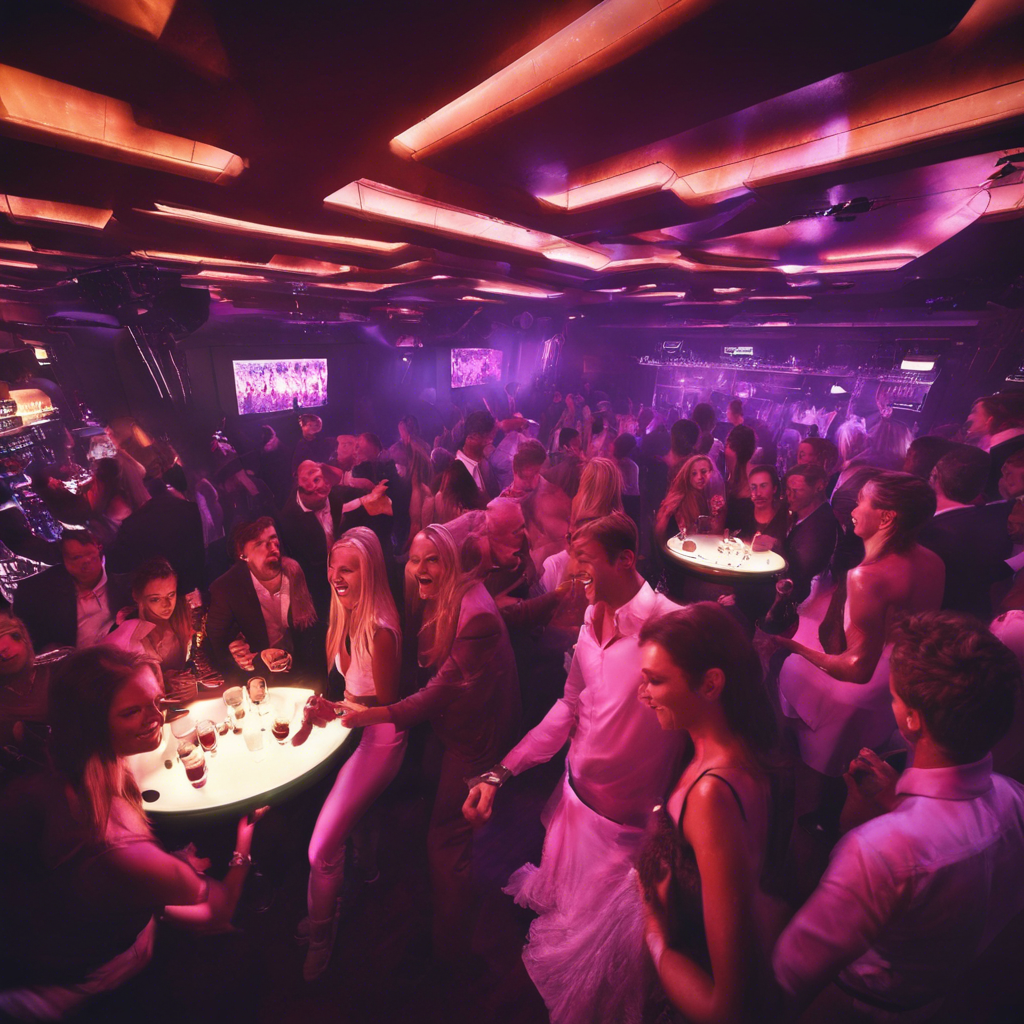
After an exhilarating day on the slopes, the Swiss Alps come alive with a vibrant nightlife scene. From cozy après-ski bars to energetic nightclubs, there’s something for everyone looking to unwind and have fun. Here’s a guide to some of the best nightclubs and nightlife hotspots across the Swiss Alps.
1. Farm Club (Verbier)
Overview: A legendary nightclub that has been a staple of Verbier’s nightlife since 1971.
Ambiance: Known for its lively atmosphere, Farm Club is a must-visit for those looking to dance late into the night.
Highlights: Expect a mix of local and international DJs, and enjoy a unique vibe that combines rustic charm with modern beats.
2. Le Farinet (Verbier)
Overview: A popular venue for both après-ski and nightlife.
Ambiance: This club features live music and a vibrant dance floor, making it perfect for those who want to continue the party after dinner.
Highlights: Known for its shotski tradition, where patrons take shots off a ski together, it’s a fun way to bond with friends.
3. Pöstli Club (Davos)
Overview: The main nightclub in Davos, popular among locals and visitors alike.
Ambiance: Offers a lively atmosphere with themed parties and events throughout the season.
Highlights: Known for its late-night dancing and vibrant crowd, it’s ideal for those looking to experience Davos’ nightlife fully.
4. Tiffany Bar (Laax)
Overview: One of Laax’s main nightclubs, known for its energetic atmosphere.
Ambiance: A hotspot for both locals and tourists, Tiffany Bar features live DJs and themed nights.
Highlights: Perfect for those looking to dance the night away after a day on the slopes.
5. Riders Club (Laax)
Overview: Another popular nightclub in Laax, renowned for its lively parties.
Ambiance: Offers an electrifying atmosphere with top-notch DJs spinning tracks until the early hours.
Highlights: Known for its freestyle competitions during the day, Riders Club transforms into a lively dance venue at night.
6. Schneewittli (Zermatt)
Overview: A cozy bar that turns into a vibrant nightclub later in the evening.
Ambiance: Offers a relaxed vibe with great music and cocktails, perfect for unwinding after skiing.
Highlights: Known for its friendly staff and welcoming atmosphere, making it an excellent spot for socializing.
7. Hennu Stall (Zermatt)
Overview: Located conveniently on your way off the mountain, Hennu Stall is ideal for après-ski fun.
Ambiance: Features live music and a lively crowd, making it perfect for those looking to kick off their night out early.
Highlights: Enjoy drinks while mingling with fellow skiers before hitting the clubs.
8. MooserWirt (St. Anton)
Overview: Famous as one of Austria’s top après-ski venues, MooserWirt is not to be missed.
Ambiance: Known for its energetic vibe and live performances, it’s where the party starts right after skiing.
Highlights: Dance on tables and enjoy live music from popular Austrian bands.
9. Krazy Kanguruh (St. Anton)
Overview: Another iconic venue in St. Anton known for its festive atmosphere.
Ambiance: Offers a mix of après-ski fun and late-night partying with DJs spinning tunes until late.
Highlights: Famous for its lively crowd and fun events throughout the ski season.
10. Schatzi (Ischgl)
Overview: A lively club in Ischgl that embodies the spirit of après-ski partying.
Ambiance: Known for its table dancing and upbeat music, Schatzi is where you go to let loose after skiing.
Highlights: Enjoy themed nights and live performances that keep the energy high all night long.
The nightlife in the Swiss Alps is as thrilling as the skiing itself. With various options ranging from cozy bars to energetic nightclubs, there’s no shortage of places to unwind after an adventurous day on the slopes. Whether you’re dancing at Farm Club in Verbier or enjoying cocktails at Hennu Stall in Zermatt, each venue offers a unique experience that captures the essence of alpine nightlife. So grab your friends, put on your dancing shoes, and get ready to enjoy an unforgettable night out in the Swiss Alps!
Wildlife Awareness:
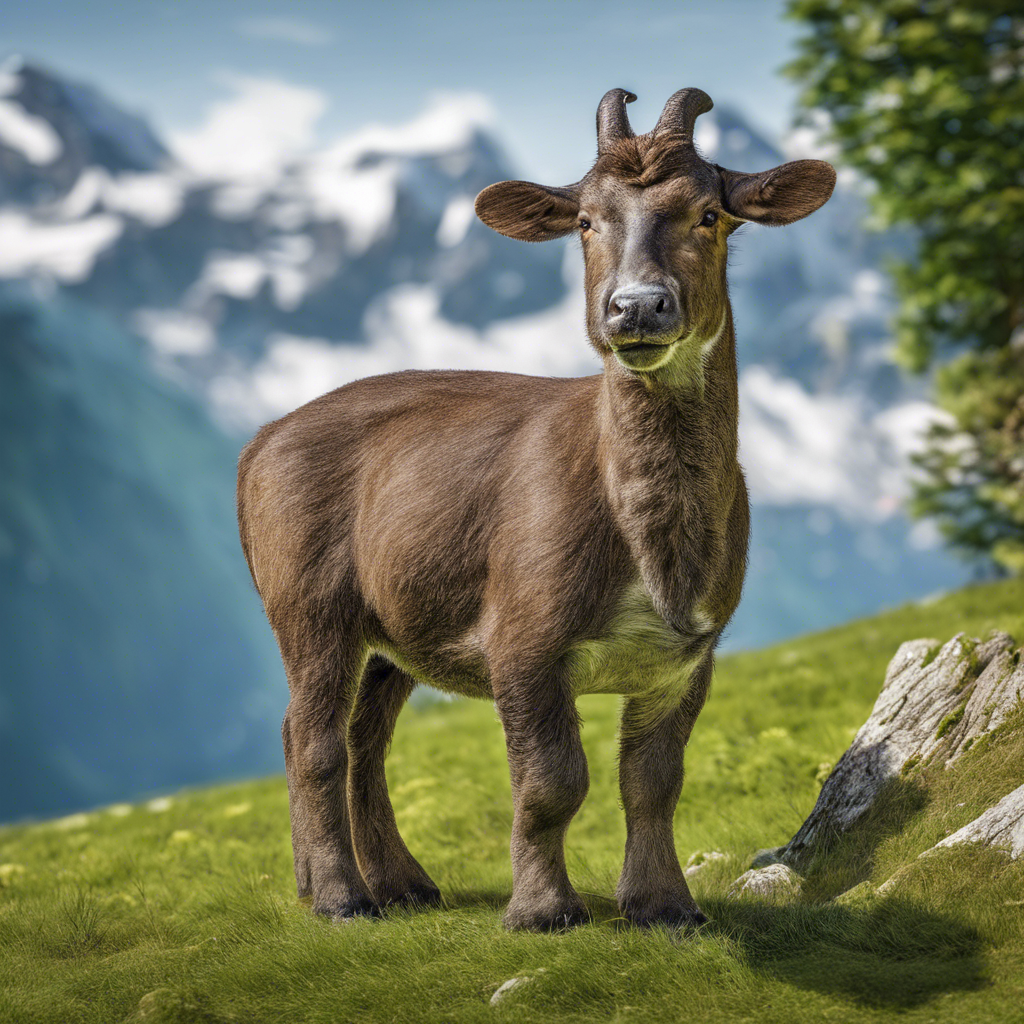
The Swiss Alps are renowned for their stunning landscapes and diverse ecosystems, but they also face significant challenges in terms of wildlife conservation and biodiversity. Understanding these challenges and promoting awareness is crucial for preserving the unique flora and fauna of this region.
Biodiversity Challenges
Climate Change Impact:
The Swiss Alps are experiencing rising temperatures, which affect the habitats of various species. Plants and animals are struggling to adapt as their environments change, leading to shifts in biodiversity. Many species are moving to higher altitudes, but this upward migration is not always sustainable due to limited space and resources1.
Threatened Habitats:
Nearly half of Switzerland’s 230 habitat types are threatened, particularly moors, farmland, and freshwater ecosystems. This loss of habitat puts pressure on wildlife populations, with about one-third of the 45,000 species of flora and fauna in Switzerland facing threats1.
Invasive Species:
Non-native species can disrupt local ecosystems by competing for resources. These invasive species pose a significant threat to native flora and fauna, making it essential to monitor and control their spread1.
Human-Wildlife Conflict:
As human populations grow, conflicts between wildlife and agricultural interests increase. Farmers often seek to eliminate predators like wolves and lynx, which have been making a comeback in the region but are viewed as threats to livestock14.
Key Species in the Swiss Alps
Chamois:
A goat-like animal well adapted to steep, rocky terrains. Chamois can often be spotted during hikes and are known for their agility in navigating difficult landscapes4.
Ibex:
Once extinct in the region, ibex have been successfully reintroduced and can now be seen in various areas of the Alps. Their populations are a testament to successful conservation efforts34.
Lynx:
The lynx has returned to the Swiss Alps after being driven to extinction in the early 20th century. Conservation programs have helped increase their numbers, with around 250 individuals currently roaming the region14.
Wolves:
Wolves have been gradually returning to Switzerland since the mid-1990s. While they play a crucial role in maintaining ecological balance, their presence often leads to tensions with farmers concerned about livestock safety14.
Birds of Prey:
The Swiss Alps are home to various birds of prey, including golden eagles and bearded vultures. These majestic birds can be observed during guided wildlife tours that focus on their hunting techniques and habitats5.
Conservation Efforts
Protected Areas:
Switzerland has established several protected areas that serve as sanctuaries for wildlife. The Bolle di Magadino reserve is one such area that plays a vital role in preserving biodiversity1.Community Involvement:
Local communities are increasingly engaged in conservation efforts, advocating for policies that protect natural habitats and promote biodiversity1. Initiatives aimed at raising awareness about local wildlife encourage responsible tourism practices.Guided Wildlife Tours:
Many organizations offer guided tours that educate visitors about local wildlife while promoting conservation awareness. These tours provide opportunities to observe animals like chamois and red deer in their natural habitats while learning about their ecological roles5.
Travel Tips for Wildlife Watching
Respect Wildlife: Always maintain a safe distance from animals and avoid disturbing their natural behaviors.
Choose Guided Tours: Opt for guided wildlife watching tours led by experts who understand animal behavior and habitat needs.
Stay Informed: Educate yourself about local species and conservation issues before your visit to enhance your experience.
Leave No Trace: Follow principles of responsible tourism by minimizing your impact on natural environments.
Wildlife awareness is crucial for preserving the unique ecosystems of the Swiss Alps amidst growing environmental challenges. By understanding the complexities of biodiversity and participating in conservation efforts, visitors can contribute positively to the preservation of this breathtaking region while enjoying its natural beauty. Whether you’re hiking through alpine meadows or observing wildlife from a distance, every action counts toward protecting these precious habitats for future generations.
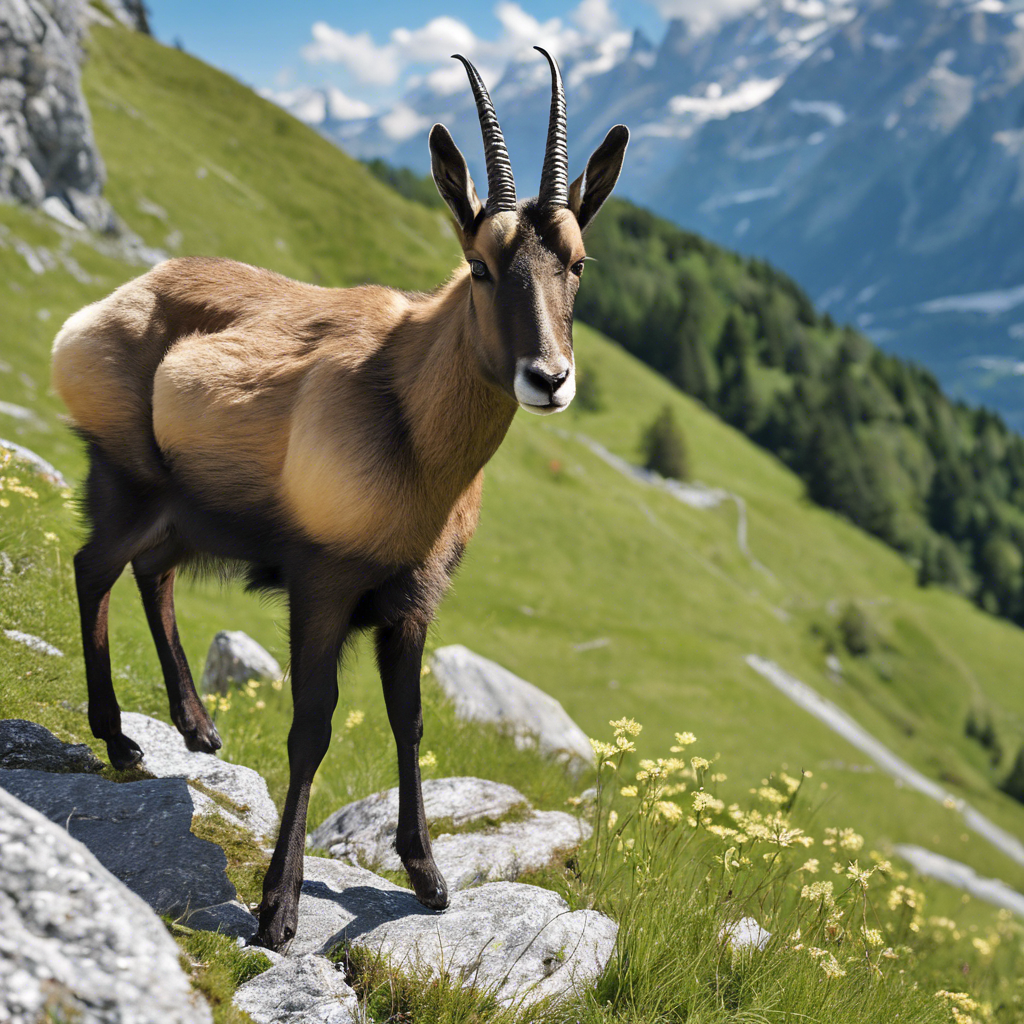
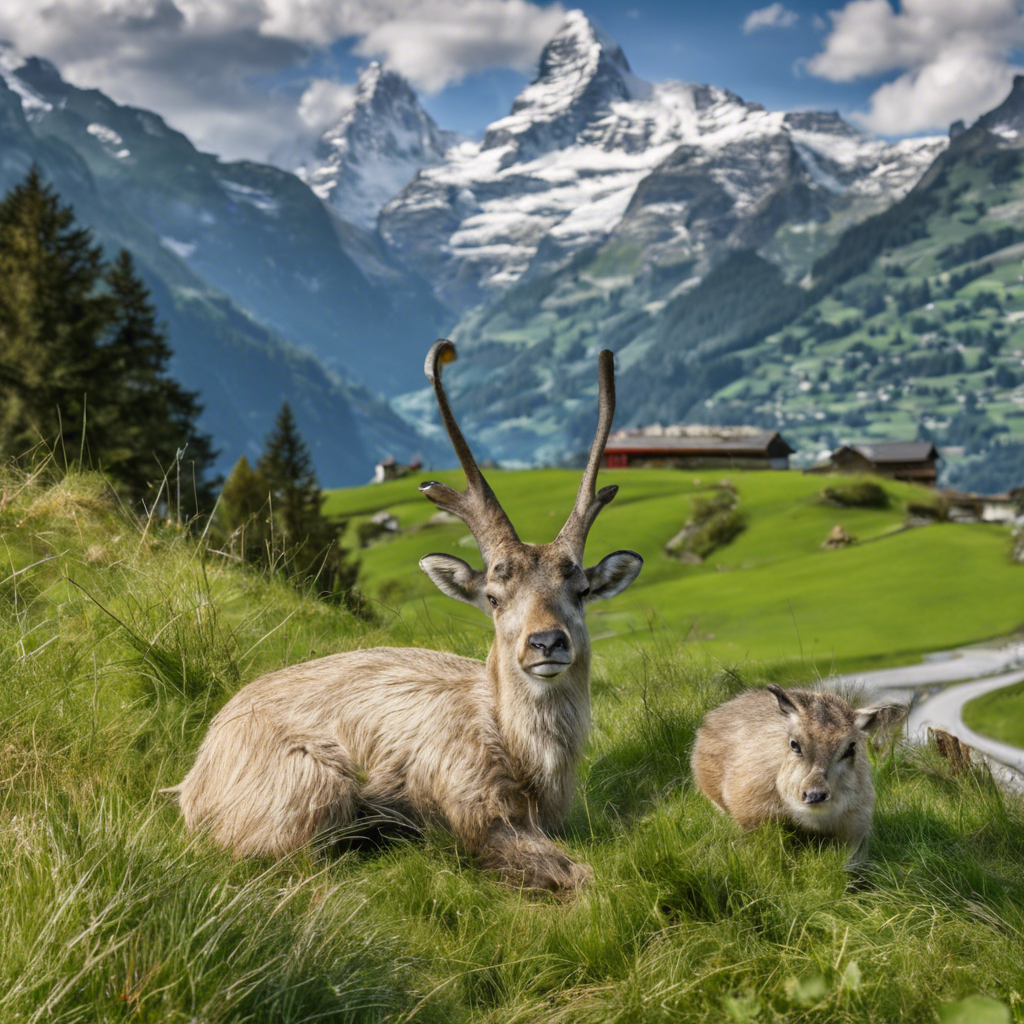
Transportation Tips:
Navigating the Swiss Alps can be a delightful experience, thanks to the region’s efficient and extensive transportation system. Here are some essential tips to help you make the most of your travels while enjoying the stunning alpine scenery.
1. Utilize the Swiss Travel Pass
Overview: The Swiss Travel Pass is an excellent option for travelers planning to explore multiple regions. It covers trains, buses, boats, and many mountain lifts.
Benefits: With this pass, you can hop on and off public transport without worrying about individual ticket purchases. It also includes discounts on certain scenic routes and free travel for children under 16 when accompanied by an adult.
2. Plan Your Routes
Scenic Train Rides: Don’t miss out on scenic train journeys like the Glacier Express, Bernina Express, and GoldenPass Line. These routes offer breathtaking views and require seat reservations.
Check Timetables: Always check schedules in advance, especially for seasonal services like cable cars and boats. Websites like SBB (Swiss Federal Railways) provide comprehensive timetables.
3. Use Public Transport Efficiently
Integrated System: Switzerland’s public transport system is highly synchronized. Trains, buses, and boats often connect seamlessly, minimizing wait times.
PostBus Services: For remote areas not accessible by train, the yellow PostBuses are a reliable option. They are well integrated with train schedules and can take you to picturesque mountain villages.
4. Consider Cable Cars and Funiculars
Unique Experiences: Riding cable cars and funiculars is not just practical—it’s an adventure! These modes of transport offer stunning views as they ascend to higher altitudes.
Reservations: Some popular routes may require reservations, particularly during peak seasons.
5. Know Your Ticketing Options
Regular vs. Scenic Tickets: Regular trains don’t require advance booking, but scenic trains do. Make sure to purchase tickets for scenic routes ahead of time to secure your spot.
Discounts Available: Look for discounts on specific routes if you hold a rail pass; many mountain railways offer reduced fares for pass holders.
6. Stay Connected with Apps
Download Useful Apps: The SBB mobile app can help you track real-time schedules, purchase tickets, and navigate connections easily.
Offline Maps: Consider downloading offline maps or guides that detail public transport routes in case of limited internet access in the mountains.
7. Be Mindful of Travel Times
Early Departures: If you have early flights or connections, plan your travel times carefully. Ensure that you allow enough time to reach your destination without rushing.
Mountain Roads: Be aware that some mountain roads can be slow due to weather conditions or construction work.
8. Respect Local Regulations
Driving Restrictions: Many alpine villages are car-free (like Zermatt and Mürren). Always check local regulations regarding vehicle access before planning your trip.
Public Transport Etiquette: Keep noise levels down on public transport and be courteous to fellow travelers.
9. Explore by Bike or Foot
Cycling Routes: Biking is popular in the Swiss Alps, with numerous trails available for all skill levels. Consider renting bikes in towns for a fun way to explore.
Hiking Trails: The extensive network of hiking trails allows you to experience the beauty of the Alps up close. Many trails are accessible via public transport.
10. Enjoy Scenic Boat Rides
Lake Transport: Take advantage of boat services on lakes like Lake Geneva or Lake Lucerne for a scenic alternative to road travel. These rides offer unique perspectives of the surrounding mountains.
Transportation in the Swiss Alps is designed to enhance your travel experience while providing access to some of the most beautiful landscapes in the world. By utilizing public transport efficiently, planning your routes carefully, and embracing local travel options like cable cars and boats, you can enjoy a seamless journey through this stunning region. Whether you’re skiing down slopes or hiking through picturesque valleys, these tips will help ensure that your travels are as enjoyable as possible!
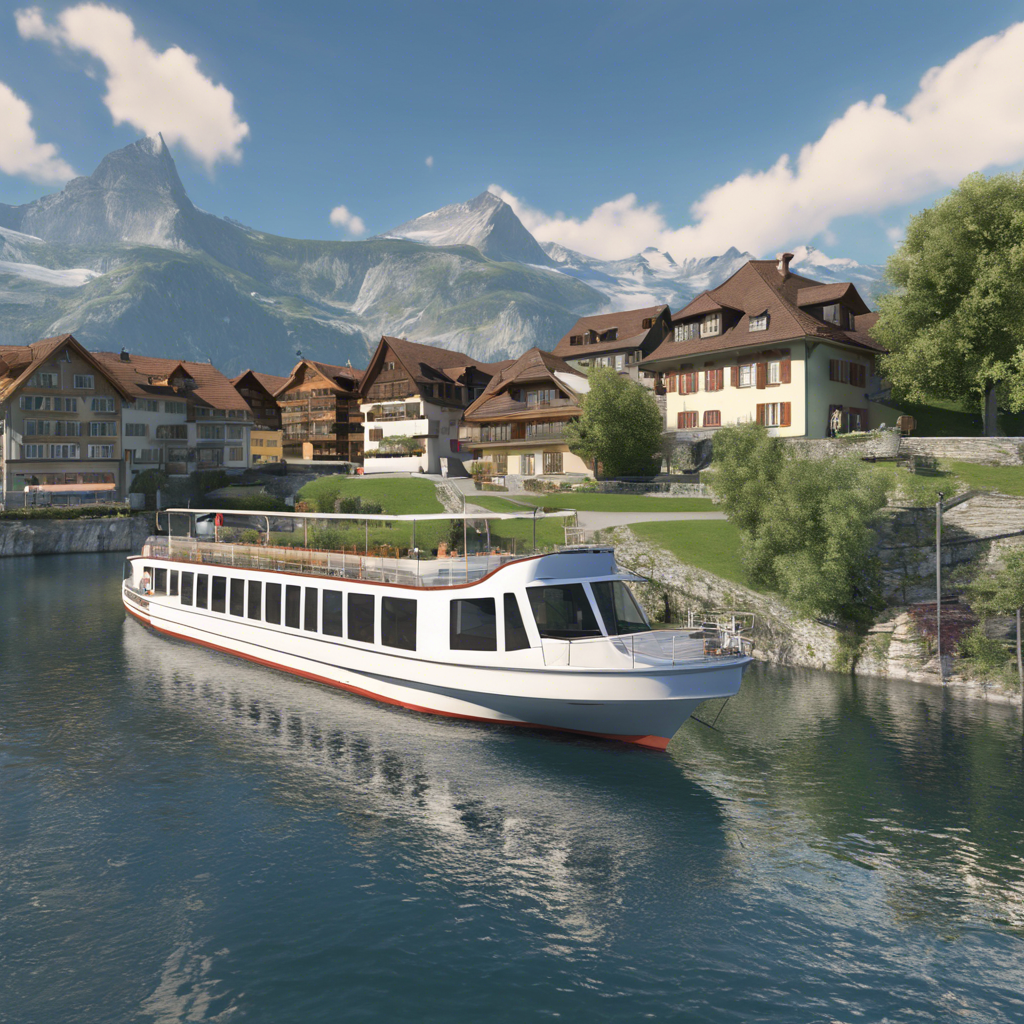
Travel Tips
Traveling to the Swiss Alps can be an unforgettable experience, filled with breathtaking scenery, thrilling outdoor activities, and rich cultural experiences. Here are some essential travel tips to help you make the most of your alpine adventure.
1. Plan Your Itinerary Wisely
-
Duration: Aim for at least 2-7 days in the Alps to fully appreciate the region. This allows time for skiing, hiking, and exploring charming villages.
-
Key Destinations: Consider starting in Interlaken, a central hub that provides easy access to popular areas like Grindelwald, Mürren, and Zermatt. Each location offers unique experiences from stunning views to thrilling activities.
2. Utilize Public Transportation
-
Swiss Travel Pass: Invest in a Swiss Travel Pass for unlimited travel on trains, buses, and boats. This pass is especially useful for accessing remote areas and scenic routes without the hassle of buying individual tickets.
-
Efficient Connections: The Swiss public transport system is highly synchronized. Trains and buses often connect seamlessly, minimizing wait times between transfers34.
3. Experience Scenic Train Rides
-
Panoramic Views: Don’t miss iconic scenic train journeys like the Glacier Express and Bernina Express. These trains offer large windows for optimal viewing of the stunning landscapes5.
-
Reservations Required: Be sure to book your seats in advance, especially during peak tourist seasons.
4. Consider Cable Cars and Funiculars
-
Unique Access: Many mountain attractions are accessible via cable cars and funiculars, providing breathtaking views as you ascend. Popular options include the Schilthorn and First Cliff Walk.
-
Check Operating Times: Some cable cars may have limited operating hours or seasonal closures, so check schedules ahead of time1.
5. Pack Accordingly
-
Layered Clothing: The weather in the Alps can change rapidly. Dress in layers to stay comfortable whether you’re skiing, hiking, or enjoying a leisurely stroll through a village.
-
Footwear Matters: Invest in good-quality hiking boots if you plan on exploring trails; they provide better support and traction on uneven terrain.
6. Stay Connected
-
Mobile Apps: Download helpful apps like SBB for real-time transportation updates and maps. Offline maps can also be beneficial in remote areas where internet access may be limited3.
-
Wi-Fi Availability: Many hotels and cafés offer free Wi-Fi, making it easier to stay connected while traveling.
7. Respect Local Customs
-
Dining Etiquette: Tipping is appreciated but not mandatory in Switzerland; rounding up your bill is common practice.
-
Quiet Hours: Be mindful of noise levels in residential areas, especially during late hours.
8. Explore Local Cuisine
-
Try Traditional Dishes: Don’t miss out on local specialties like fondue, raclette, and rösti. Many mountain restaurants serve authentic Swiss dishes that enhance your alpine experience.
-
Visit Local Markets: Explore farmers’ markets for fresh produce, cheeses, and artisanal products that reflect the region’s culinary heritage.
9. Engage in Outdoor Activities
-
Seasonal Adventures: Depending on when you visit, take advantage of skiing or snowboarding in winter and hiking or biking during summer months.
-
Family-Friendly Options: Many resorts offer family-oriented activities such as sledding, zip-lining, or themed adventure parks1.
10. Be Mindful of Wildlife
-
Respect Nature: The Swiss Alps are home to diverse wildlife; maintain a safe distance from animals and avoid disturbing their habitats.
-
Guided Tours: Consider joining wildlife tours led by knowledgeable guides who can provide insights into local ecosystems while ensuring responsible viewing practices.
Conclusion
Traveling in the Swiss Alps offers a unique blend of adventure, culture, and natural beauty. By planning your itinerary wisely, utilizing public transport effectively, and embracing local customs and cuisine, you can create an unforgettable alpine experience. Whether you’re hitting the slopes or exploring picturesque villages, these tips will help ensure that your trip is enjoyable and memorable!

